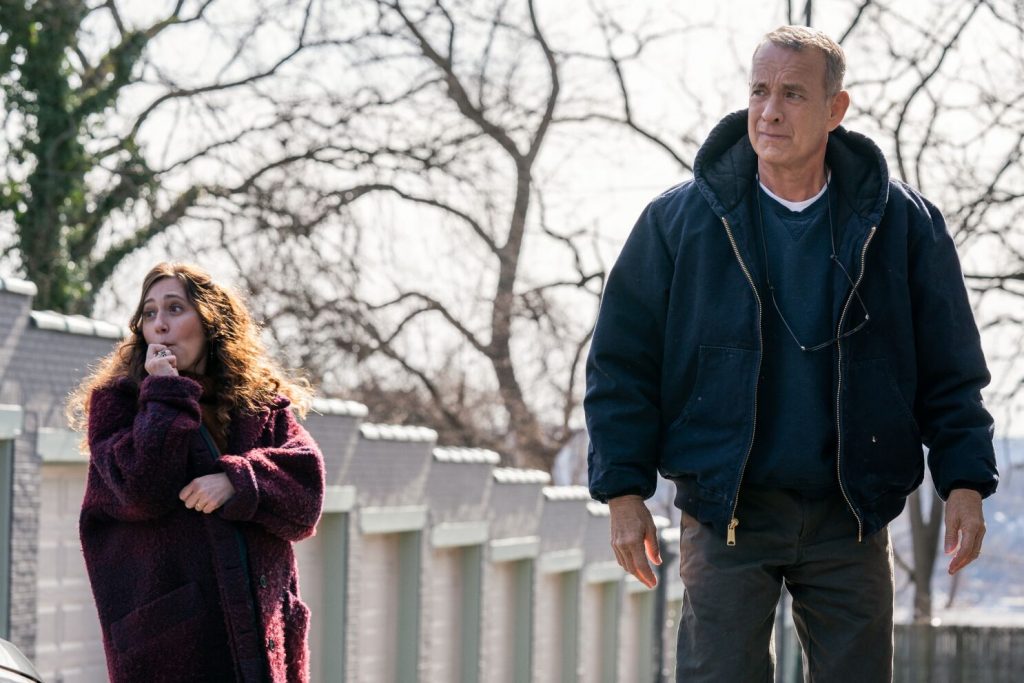TW: Mentions of suicide
Tom Hanks takes on the role of the protagonist in the film “A Man Called Otto.” He plays Otto Anderson, a 63-year-old man living in Pittsburgh, Pennsylvania, reaching into the grouchy and pessimistic ends of his talent to bring this beloved character to life.
“A Man Called Otto” is an Americanized adaptation of Fredrik Backman’s adored Swedish novel, “A Man Called Ove.” Backman’s story, published in 2012, follows the story of a curmudgeon bittered by the loss of his wife and irritated by every single person he encounters as he struggles to continue living as a widower.
The film opens with Otto shopping in a hardware store on the hunt to purchase 5 feet of rope — no more, no less — introducing us to the particular man that refuses to stray from his routines and principles. Otto proceeds to cancel his electricity and heating bills, demanding that any loose ends are tied up as soon as possible. Subsequently, he attempts to end his own life in his empty living room. Viewers quickly learn that Otto is consumed by his wife’s death and overwhelmed with his own loneliness. Everywhere he turns, he is haunted by her memory. From the second coffee cup in the cupboard collecting dust to the soft pink jackets still hanging in the corridor, he feels the pain. The reminders of her are starkly laid against the muted nature of Otto’s life without his true love, absent of color and brimming with grief.
Otto’s solitude is quickly interrupted by the move-in of his new neighbors, Marisol and Tommy, and their two daughters, Abby and Luna. The family slowly encroaches on Otto’s life through tupperware containers and driving lessons as they try to engage him with the rest of the neighborhood. Throughout the film, Otto tries to end his own life repeatedly, yet his attempts are futile as people continue to come to him in need of assistance. The story shifts back and forth between Otto’s past and present, revealing details about his life before the devastating death of his wife. Ironically, the angry and bitter Otto suffers from hypertrophic cardiomyopathy, where his heart is too big for his own good.
“A Man Called Otto” is ultimately a story of love, loss and grief through the lens of a widower soured by the trials of his own life. As an avid Backman reader and Hanks fan, I had high expectations for this film and was thrilled by how director Marc Forster adapted this story. There were plotlines from the original text that were abandoned in this adaptation. The beauty of this story, however, lies not in what happens, but in who the characters are. Forster managed to preserve Otto’s delicate balance of pessimism and kindness, and Hanks takes on this role with grace. Mariana Treviño’s adoption of Marisol’s character was also fantastic as she carried herself with the same sincerity as Parvaneh’s character from Backman’s novel.
Forster’s technical choices in directing did not go unnoticed either, as he demonstrated the contrast in Otto’s life before and after his wife’s passing, intertwining this with his life before and after meeting Marisol. The vibrance of color seen during Otto’s recollections of early experiences with his wife slowly became more muted as her life reached its end, and clearly contrasted with the duller tones of Otto’s present life. Furthermore, as Otto became more immersed in his relationships with his neighbors, Forster included alternate lighting that provided a warmer angle to view from. It is clear that every detail in this work was carefully decided, and that in-depth effort cannot pass underappreciated.
Overall, “A Man Called Otto” wonderfully retells Backman’s underappreciated story about the capricious nature of life through remarkably well-casted characters and meticulous effort. This movie has something for any kind of audience to appreciate and is well worth watching.
Rating: 5 out of 5 stars



